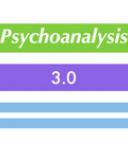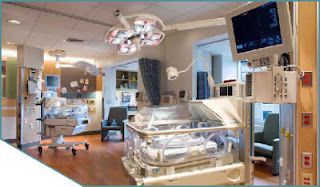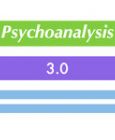
Infertility
The Dark Side Of Fertility Treatments: Lessons From A Neonatal Intensive Care Unit
When reproductive technologies go wrong
Posted July 18, 2012

By Susan Kraemer, PhD & Zina Steinberg, EdD
The media and the minds of prospective parents share a disconnect when it comes to assisted reproductive technologies (ART). They both disconnect the buoyed hope found at infertility clinics from the shadow side of technology.
Just this week new reports surfaced about the health risks to both mother and baby from fertility treatments that rely on high doses of hormones—a practice that continues because some argue that it leads to higher rates of IVF “success.”
As consultant psychologists to a busy neonatal intensive care unit (NICU)—almost three new admissions every day—we daily battle the disconnect between dreams of technological salvation and actual life and death realities. We see many of the "worst-case scenarios"; infants less than one pound, infants with congenital birth defects and unclear futures. And we’re consistently struck by how hard it is for families on the NICU who have suffered infertility to think about and make sense of what is happening.
The media makes it worse. The news is filled with the very latest fertility tales, sensationalized and envelope-pushing stories illustrating desperation, delirium, and delight. Remember Octomom? Or accounts of eager to be grandparents ready to foot the bill for 30-something daughters to freeze their eggs? (Something the FDA still considers to be experimental)? Or reports of couples traveling overseas for cheaper infertility treatments? Or tales of IVF babies weighing less than a soda can surviving to go home from the hospital?
In contrast, the sometimes harrowing shadows cast by the techno-promises of ART, shadows in which we sit at the NICU, don’t get much airtime. The media often makes infertility seem relatively uncomplicated, or worse, in the realm of "miracle." Consider Mrs. R who sits dazed and confused in the NICU’s weekly parent group:
“It was the best and worst day of my life. After 5 rounds of infertility drugs and treatments, miscarriages—early and late—dashed hopes and dark moods, I had my babies, twins. But they were born at 26 weeks and now my son has a cerebral bleed and his head is growing dangerously large. They tell me that they need to put in a shunt. I no longer know what to feel—except terrified. They call me ‘mommy,’ but am I? I was a woman who longed to be a mommy, but I never expected this.”
The parents in the group nod in solidarity, knowing intimately of her fear, confusion and despair. Like her, many of them have a history of infertility and have been on the express train of treatments propelled by the powerful hope of having a biological child.
In the fast-paced, high-tech, medical intensive care world past and future are pushed to the far margins; focus is on the immediate crisis, the next decision. And when parents tearfully recall being told that Assisted Reproductive Technologies increase the risk of multiple births, and that multiple births likely result in prematurity which in turn may coincide with varied neurodevelopmental and psychiatric problems they show the disconnect with painful clarity:
“I thought a preterm baby would just be smaller. I didn’t think a preterm baby would be kept alive by all these tubes and wires, be so scrawny, not even look like a baby. I never connected prematurity and all these scary problems.”
What’s the psychology of this disconnect, a disconnect seen so clearly in the media and the minds of our parents on the NICU? How does it work that rational warnings are given and yet patients yearning to be parents seem to not really digest the information?
Dr. Meryl Weinman Dorf wrote a piece for Psychoanalysis 3.0 describing the traumatized state of mind typical of couples undergoing infertility treatment. She emphasized how the dizzying cycles of hope and crashing despair lead almost inevitably to what is called dissociation—the adaptive process by which we disconnect from unbearable thoughts and feelings in an effort to cope with overwhelming stress. While emotionally protective in the short run, dissociation dismantles critical thinking processes.
Said one parent, “when you’re feeling desperate, envious, you’re not thinking ‘well, I don’t want to risk a multiple pregnancy, or think about the risk of reductions. You’re just thinking I should be so lucky as to have the ‘problem of multiples’.”
The omnipotent promise of ART, coupled with parents’ deep desires to have their “own child”, overwhelms and overshadows the capacity to think, sometimes with tragic consequences. We see parents who relied on reproductive technologies to conceive now expect other technologies will rescue and maintain their babies. It is heartbreaking to hear NICU parents wonder if their pregnancy would have been healthier and the baby more likely to thrive if they had transferred only one embryo. Or listen to them worry that it was the selective reduction from quads to twins that brought on the premature labor and then birth at only 25 weeks.
Academic studies, professional organizations and government reports urge doctors to fully counsel couples on the risks of ART, not simply to recite a long list of possible outcomes with hard-to-understand statistics. But our parents on the NICU show us we have to do better. Counseling is not enough.
What we’ve learned on the NICU is that mixing the desire for a biological child with the miraculous promises of technology creates conditions ripe for disconnection and dissociation. And the disconnect between the buoyed hopes of ART and the shadow side of technology gone wrong collide with our culture's aversion to governmental regulation. We can wonder if doctors in this highly competitive, multi-billion dollar unregulated business are incentivized to spend the time necessary to help couples reach a considered understanding of ART. Clearly some are and others are not. But we need to do more to work with the intense emotional and cognitive disruption that infertility (and then possibly having a baby in the NICU) creates. Doctors need help to understand how a “traumatized mind” is unable to make connections, to draw links and think critically beyond the present moment.
Regulation of the ART industry would help. In fact, in most western European countries the rate of prematurity is far less, as they regulate the number of embryos that can be implanted, thus minimizing the chance of multiple births. The resistance to regulation in the U.S. puts too heavy a burden on the often cognitively compromised couple to evaluate possible risks so they can head knowingly into their future.
----------------
About the Authors:
Dr. Susan Kraemer is a clinical psychologist and graduate of the NYU Postdoctoral Program in Psychotherapy and Psychoanalysis, practicing in New York City. She consults with staff and family in the NICU at New York- Presbyterian Hospital. She believes that the traumas associated with perinatal loss and premature birth are often under-recognized and works with parents to enable their relationships with one another, with themselves and with their children to deepen and thrive.
Zina Steinberg is an assistant professor of medical psychology in pediatrics and psychiatry, Columbia University College of Physicians and Surgeons where she serves as consultant to families and medical caregivers in the NICU. She is also on the faculties of the Parent-Infant Psychotherapy Training Program, Columbia University Center for Psychoanalytic Training and Research and the Stephen Mitchell Center for Relational Studies and is co-founder of www.bodycope.com. She has a private practice in New York City.
© 2012 Susan Kraemer and Zina Steinberg, All Rights Reserved
http://www.psychologytoday.com/blog/psychoanalysis-30



